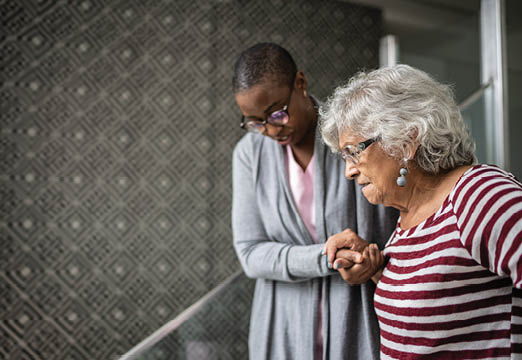A growing concern of employers before, during, and after the pandemic is employee burnout.
In March 2020, Gallup reported on the Causes and Cures of Employee Burnout. This report focused on burnout as “a symptom of modern workplaces that are increasingly fast-paced, complex, and demanding.” This aspect of burnout has been frequently written about in terms of workers achieving necessary balance between work-life and home-life responsibilities.
The traditional view of burnout looks at factors like role clarity, workload, number of hours worked, flexibility, and autonomy in one’s work, and relationships between workers and managers.
The Human Toll of Burnout
According to Gallup, here’s the human impact on employees experiencing burnout:
- They are 2.6 times more likely to be actively seeking a different job.
- 63 percent of them are more likely to take a sick day.
- 23 percent are more likely to visit an emergency room.
The human toll of burnout is real with additional reported symptoms including: exhaustion and insomnia, irritability, lack of concentration, and decreased productivity, as well as physical pain, including persistent headaches, gastrointestinal distress, rising blood pressure, and weight gain or loss. Hallmark signs of burnout are pessimism and cynicism expressed as self-doubt, a sense of failure, and feelings of decreasing effectiveness at work combined with decreasing satisfaction and sense of accomplishment at work.
Burnout Due to Caregiving
However, an aspect of burnout I am increasingly hearing about in my professional work and personal life is the growing risk of burnout from rising caregiving responsibilities at home.
Caregiving responsibilities had been on the rise before the pandemic, but the scope and magnitude of these responsibilities grew during the pandemic.
There are studies that demonstrate the growing frequency and intensity of caregiving responsibilities. According to AARP in the 2020 Caregiving in the US Survey, the number of Americans providing unpaid care increased between 2015 and 2020 from 43.5 million Americans to 53 million. In this study, 61 percent of caregivers are employed in today’s workforce. Additionally, 61 percent of working caregivers are women and 39 percent are male.
Johns Hopkins Medicine Department of Community Health’s “Are you a Caregiver” quiz shares representative responsibilities performed by caregivers, including helping with any of the following activities of daily living and other tasks:
- Transportation to medical appointments
- Purchasing or organizing medications
- Monitoring their medical condition
- Communicating with healthcare professionals
- Advocating on their behalf with providers or agencies
- Getting in and out of beds or chairs
- Getting dressed
- Bathing or showering
- Grocery or other shopping
- Housework
- Preparing meals
- Managing finances and paying bills
The 2020 AARP study reveals that caregiving is a multigenerational challenge as well. The percentage of people engaged in daily caregiving responsibilities by generation is:
- 34 percent of Boomers (1946-64)
- 29 percent of GenX (1965-1979
- 23 percent of Millennials (1980-1994)
- 7 percent of Silent (1925-45)
- 6 percent of GenZ) (1995-2012)
The intensity of caregiving also increased as the number of Americans providing care for more than one person increased from 18 to 24 percent. Sadly, the impact on caregivers’ wellbeing is real, with 23 percent reporting caregiving has had an adverse impact on their health.
Caregiving Is an Issue Employers Should Address
Caregiving is something we need to care for, and if you’re an employer, it may be wise for you to consider the potential positive impact from adding caregiving support into your sponsored health plan coverages.
If you’re interested in this, but don’t know where to start, we have a team of experts ready to jump in and answer questions. All you have to do is contact us!




